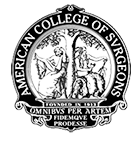| Candidates | Risks | Preparation | Consultation | Intro | Recovery |
What are the steps of a breast reconstruction procedure?
A breast reconstruction procedure includes the following steps:
Step 1 – Anesthesia
Medications are administered for your comfort during the surgical procedure. The choices include intravenous sedation and general anesthesia. Your doctor will recommend the best choice for you.
Step 2 – Flap techniques reposition a woman’s own tissue to create or cover the breast mound
Sometimes a mastectomy or radiation therapy will leave insufficient tissue on the chest wall to cover and support a breast implant. In these cases, breast reconstruction usually requires either a flap technique or tissue expansion.
A TRAM flap uses donor muscle, fat and skin from a woman’s lower abdomen to reconstruct the breast. The flap may either remain attached to the original blood supply and be tunneled up through the chest wall, or be completely detached, and formed into a breast mound.
Alternatively, your surgeon may choose the DIEP flap or SIEA flap techniques, which do not use abdominal muscle but transfer only skin and fat to the chest from the abdomen. If there is insufficient tissue on the lower abdomen, other donor sites such as the buttocks or thighs may be selected (SGAP flap, TUG flap, PAP flap).

A latissimus dorsi flap uses muscle, fat and skin from the back tunneled to the mastectomy site and remains attached to its donor site, leaving blood supply intact.

Occasionally, the flap can reconstruct a complete breast mound, but often the latissimus flap provides the muscle and tissue necessary to cover and support a breast implant.

Step 3 – Tissue expansion stretches healthy skin to provide coverage for a breast implant
For women who do not require breast radiation and would like to avoid a separate donor site, implant-based reconstruction is an option. Reconstruction with tissue expansion allows an easier recovery than flap procedures, but it can be more lengthy reconstruction process.
It usually requires several office visits over 1-2 months after placement of the expander to gradually fill the device with saline through an internal valve to expand the skin. Newer air-filled devices may allow patient-controlled expansion at home using a remote dosage controller.
A second surgical procedure will be needed to replace the expander if it is not designed to serve as a permanent implant.
Step 4 – Surgical placement of a breast implant creates a breast mound
A breast implant can be an addition or alternative to flap techniques. Surgeons may also use an implant as a temporary placeholder during other breast cancer treatments until you are ready for more involved flap reconstruction techniques. Saline and silicone implants are available for reconstruction.
Your surgeon will help you decide what is best for you. Reconstruction with an implant alone usually requires tissue expansion. Direct-to-implant breast reconstruction may be an option for some women undergoing mastectomy with certain tumor characteristics and breast shapes.
Step 5 – Reconstructing a nipple and areola, breast revision techniques
For women who are not candidates for nipple-sparing mastectomy, breast reconstruction is completed through a variety of techniques that reconstruct the nipple and areola. Techniques usually involve folding skin to create the shape of a nipple followed by tattooing. Three-dimensional nipple-areolar tattooing may be used alone to create the appearance of a realistic nipple with the illusion of projection. Breast reconstruction outcomes can often be enhanced with staged revision procedures that improve symmetry, use liposuction with fat grafting and improve the appearance of the donor site.
source : https://www.plasticsurgery.org/reconstructive-procedures/breast-reconstruction/procedure

